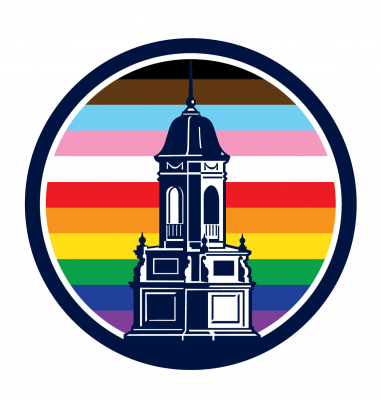
-What is your academic background and what is your current position in UCHI/at UConn/Your Home Institution?
I was born and educated in The Netherlands, where I taught at Leiden University after finishing my PhD in 1984. In 1999, I moved to the US, starting my work at UConn in 2000, after having been a visiting fellow for one year at Skidmore College on a project about ‘Creativity in Art and Science. I’m a professor of linguistics who is specialized in the study of the sound structure of languages (‘phonology’). I have worked on different phenomena such as ‘syllable structure’ , ‘word stress’ and ‘vowel harmony’. When I discovered that there are languages that have no sound structure (sign languages), I included those in my research. These languages use visual display instead of sound to express meaning, but other than that they are just like spoken languages in grammatical structure and functionality.
-What is the project you’re currently working on?
The project that earned me a fellowship at the Humanities Institute this year focuses on the relation between the perceptible form of languages and meaning, specifically looking (!) at visual languages. The question of how words get to have their perceptible form (whether audible or visible) is very old (e.g. discussed in Plato’s dialogue Cratylus). Forms relate to meaning on a continuum from the form being totally arbitrary (as most words in spoken language; why do we refer to a cat with the word ‘cat’?) to being in some sense motivated by the meaning (as in the Chinese word for cat which is ‘mao’). We call this iconicity. Iconicity plays a much larger role in sign languages and I want to investigate the factors that play a role in allowing this to happen and suppressing it in the case of spoken languages (where it actually happens more than most linguists want to admit). In my project, I also include another visual ‘language’, namely the language of drawing, especially in the context of ‘comics’ or ‘graphic novels’.
-How did you arrive at this topic?
My project combines a number of research lines that have developed gradually over many years. My route from spoken languages to sign languages occurred because realizing that not all languages have sound structure (which was the focus of my attention for many years) came as a shock. Had I spent many years of my life on a side of language that is non-essential? But then I realized that sign languages have a counterpart to phonology because indeed all languages (in fact, all communication systems) need a perceptible side to convey meaning. So this relationship (form/meaning) crystallized as a central issue. From a young age, I’ve liked drawing and graphic novels. I then discovered that there is a blooming academic field that studies this art form. Extending my work into this domain was a natural step (and a perfect excuse to integrate a childhood interest within my academic endeavors).
-What impact might your work have on a larger public understanding of your topic?
Language is something that everyone finds interesting. Yet, many misunderstandings exist among both lay people and academics. This is especially so with respect to sign languages. My work will contribute to erasing ‘language myths’ and allow insights that have been gained in linguistics to be shared with a larger community. By broadening the perspective and including both spoken and signed languages, as well as other, specifically visual, communication systems, my project will highlight the fact that human culture is essentially a web of communication systems and that the relationship between their forms and meanings is a perfect theme to unite the study of these systems.








